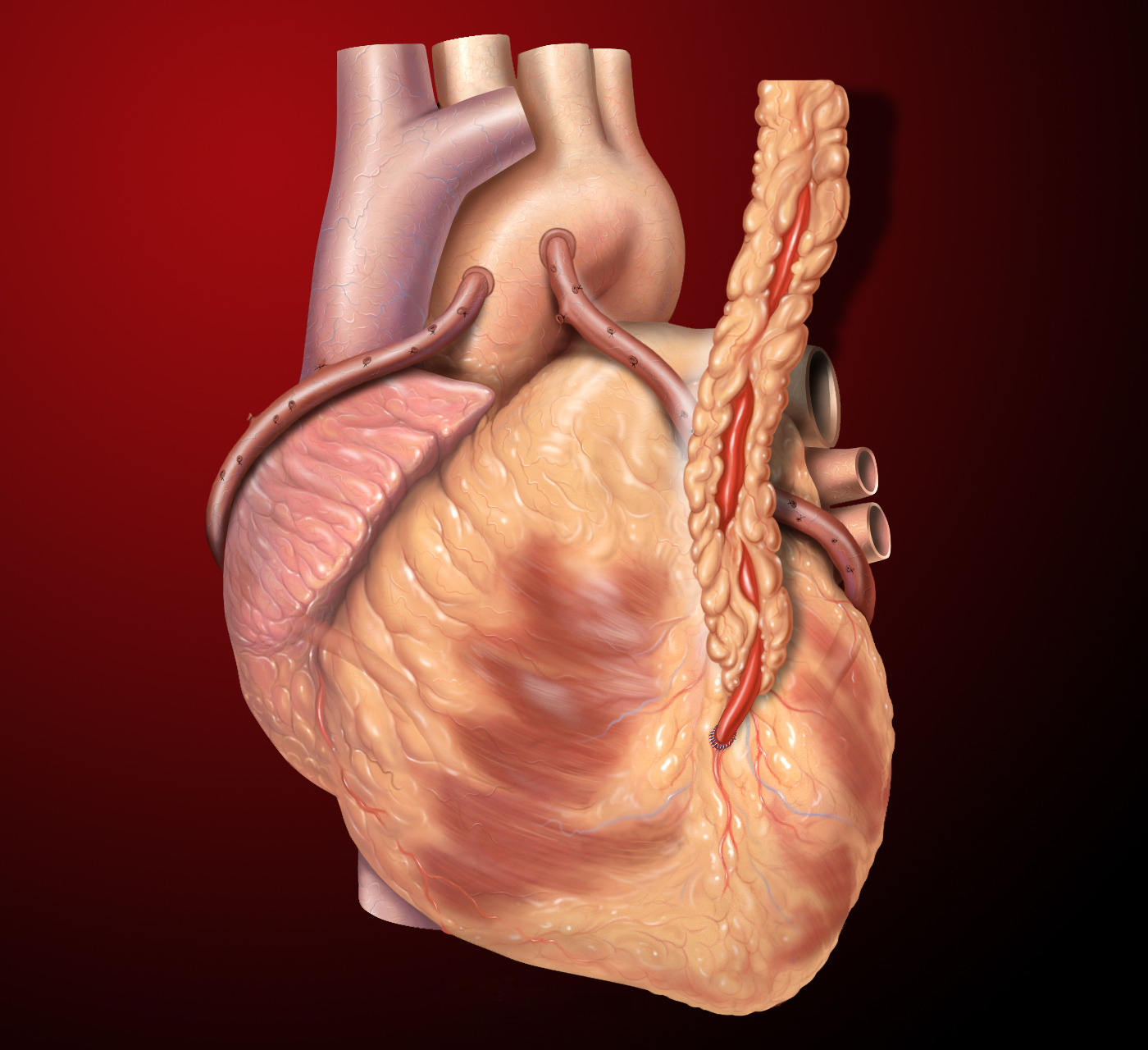Overview
If you have very severe coronary disease, in addition to medication, you may need to have open heart surgery. This is a large, but routine operation. It entails 1 week in hospital and 6-8 weeks to fully recover. This will usually mean that your breast bone is split and then sewn up again. You are usually placed on a heart-lung bypass machine, although the operation can be done on the beating heart.

Bypass grafts placed on the heart.
Do I need CABG?
CABG is usually performed when treatment of complex coronary disease/narrowing in the coronary arteries are too widespread or complex to treat with medical therapy (drugs) and/or angioplasty. Patients usually have symptoms, but this is not always the case.
What is involved and what are the risks?
CABG is open heart surgery in a specialist hospital. The chest is cleaned after you are asleep. In most cases your breast bone is split and then sewn up afterwards. You are usually placed on a heart-lung bypass machine, although the operation can be done on the beating heart. Your blockages are bypassed using material from inside your body – the left internal mammary artery, veins form your legs or arms, and sometimes arteries from your arms also. Following surgery, patients are closely monitored. Generally, you will awake shortly after surgery and can expect to sit up in bed the night of surgery – sipping fluids. You can move out of bed to a chair or even take short walks the next day with the physiotherapist.
Although this is a large procedure, it is now done routinely at low risk. You will be thoroughly assessed to see if your risks from the operation outweigh the benefits of having it. These tests include angiography, echocardiography, carotid artery scanning, lung function testings and blood tests.


